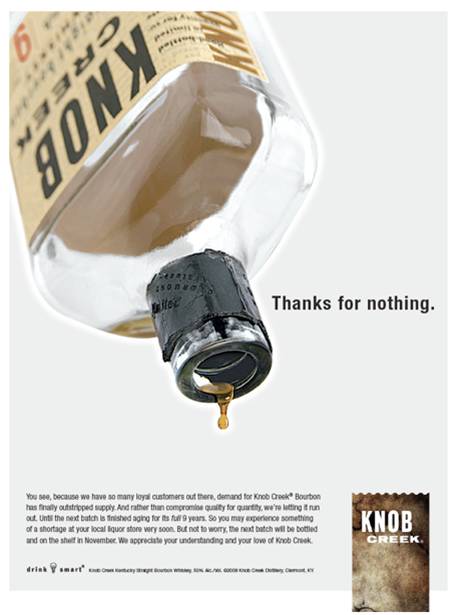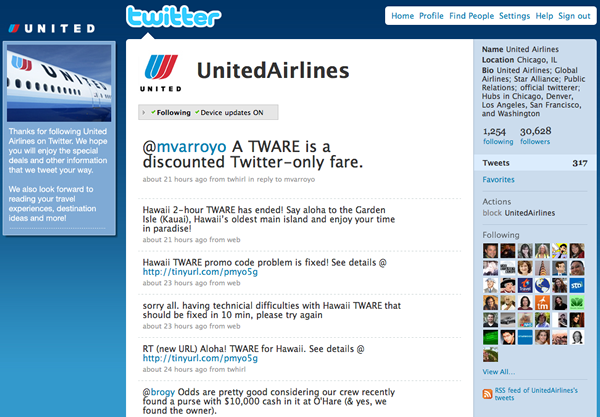11-03-2009 BY bbulman
Stephen Anderson is launching Mental Notes, a set of Psychology flash cards, which I think look great. There are 50 of them and each on has a different insight/method, with an explaination and ways to apply that insight to a project. While they wont be released until Spring you can preorder, and also download a PDF with a few samples. I ordered mine a while back and cant wait to get them…
A couple of my favorites are:

Also interestingly, he is using a wee bit of scarcity(in regards to price) to sell them as well, with the accending pricing model.
Looking forward to them.
Related Posts
10-05-2009 BY bbulman
Knob Creek recently took out a full page ad in the New York Times prompting the fact that due to high demand, they are now running low on whiskey and their customers may run into shortages very soon. While this may be true, this is a brilliant marketing play and a great example of Scarcity. Readers of the ad who do not drink Knob Creek may see this ad and wonder if everyone is buying up knob Creek, why haven’t I? Maybe I should try Knob Creek. It’s a brilliant spin of a business problem.

Found Via: Failure Magazine
Related Posts
09-18-2009 BY bbulman
Found via twitter – @JasonSpector
Since April 2008 The Sacramento Municipal Utility District has been using peer pressure and social proof to try and get customers to lower their energy consumption by giving them information about their energy consumption compared to their neighbors and to the company’s most efficient customers. Those customers who have gotten this information have lowered their energy usage by up to 2%.
This is a very interesting example of Social Proof, where seeing how others are saving, hits the customer directly in the wallet. What a great idea.
More Info: http://ow.ly/pY9L
Related Posts
08-14-2009 BY bbulman
United Airlines has recently embraced Twitter and is trying to build a following on the service. They are using special “twitter-only” fares that are highly discounted and very limited in time. If you follow @unitedairlines you will occasionally and without notice receive these “twares” tweets.
This has built a very quick following upwards of 30,000. This is a great example of Balanced Reciprocity.

Related Posts
BY bbulman
A recent trend I have been seeing with brands on Facebook is to offer some sort of value in exchange for the consumer to “Fan” their brand on Facebook. While we could talk about if there is a real value of a consumer “fanning” your brand in Facebook, that is for another time.
Early adopter brands like Starbucks and Coke have been on Facebook for a while, but recently brands have really started to more heavily invest in presences on Facebook. An interesting example of how brands are building followings on Facebook is NBC, which has started promoting many of it’s new shows via Facebook Fan Pages, such as it’s upcoming fall show Community.
NBC is giving visitors to the Community fan page access to the new show’s pilot a month earlier than it’s premiere on air in late September. All visitors have to do is become a fan of Community on Facebook. It’s a classic case of Balanced Reciprocity, when one agent gives away goods/services to another with the expectation of something in return at a later date. In this example, the value being given way is exclusive access to the pilot earlier than most of the public, and the expected return is that the consumer will be receptive to future marketing message from NBC.

The site tells consumers they must become a fan before watching, but instead of building functionality to limit viewing to fans only, NBC uses messaging to try and influence consumers to become a fan.
I expect this to be pretty successful, and expect to see more and more brands trying experiments like this on Facebook as they try to find new ways to engage with consumers.
Related Posts




